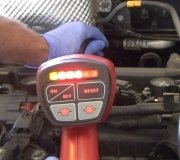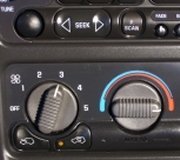Hi everyone. I have a different take on things. The first reply by saturntech9 was spot on, but only for someone looking out for the best interests of the visitor to the forum. The answer just didn't go far enough. Queenofa obviously doesn't know a real lot about cars, at least air conditioning systems, and that is exactly why this forum exists. One thing Queenofa should keep in mind is hundreds of people will read the questions and replies while searching for answers to their own problems. Replies are tailored to the individual but have to include enough information to be useful to other people, or at least to not get them into trouble by following inappropriate procedures.
To get more specific, the belt did not need to be "rerouted". Nothing will burn out because the low pressure cutout switch will stop the compressor from running. That is designed to prevent pulling the low side into a vacuum that could draw in outside air with its damaging moisture. If the compressor's clutch is falling apart or seized, installing a belt for a non-ac-equipped engine might work but then we wouldn't be discussing a leak.
Of particular interest is the very way AC systems work. At the heart of the system is a very small adjustable orifice that controls the flow of refrigerant. It can be thought of as a controlled leak. Why would you want to add something to block that leak? Orifices, by whatever name various manufacturers call them, often become blocked by a small piece of dirt or a piece of rubber that has broken off from a deteriorating hose. If all that has happened so far is a hose has begun leaking, we are doing Queenofa a major disservice by recommending some "mechanic in a can" product that might prevent taking care of other potential problem-causing defects. What good is plugging a leak if the root cause results in a blocked expansion valve that requires part replacement and recharging the system along with replacing the original part, ... If it can still be identified? I can identify with cash being tight and the desire to postpone an expensive repair, but this temporary fix might end up causing more trouble later.
Now I have some questions unrelated to the inappropriate "shame on you" issue. We go through major pains to prevent getting any contamination in the systems. How does this foreign material know which bad leak to plug and which needed leak to leave alone? If the material responds to a drop in pressure, it is going to plug the expansion valve resulting in no cooling at all. If it thickens in the presence of oxygen in the air, why doesn't it blow away before it has time to set up? If it simply swells rubber parts, that won't cause blockage of the expansion valve, but won't it also soften the rubber hoses and make them slide out of the metal tubes crimped on their ends? And if that's how it works, what good does that do if a metal gasket, evaporator, or condenser is leaking. Most importantly, what happens when the refrigerant is reclaimed and recycled when the system needs service? Won't that contaminate the recovery equipment? Many shops use refrigerant identifiers before servicing an AC system to prevent that contamination and they will refuse to work on systems with anything other than R-134 in them.
When it comes to injecting this material, is the container under pressure or does the system have to be depressurized? If the refrigerant has to be removed first, a major part of the service is already being done. You might as well replace the leaking part and get it over with. When the system is properly repaired, does the material stay in it like the circulating oil or does it get recovered along with the refrigerant?
As a professional myself, I can't imagine using a product that would allow me to avoid performing a proper repair for my customers. If these were so good as an additive, why don't manufacturers include them as they already do with coolant, engine oil, and transmission fluid?
Caradiodoc
caradiodoc
Tuesday, July 13th, 2010 AT 1:35 AM




